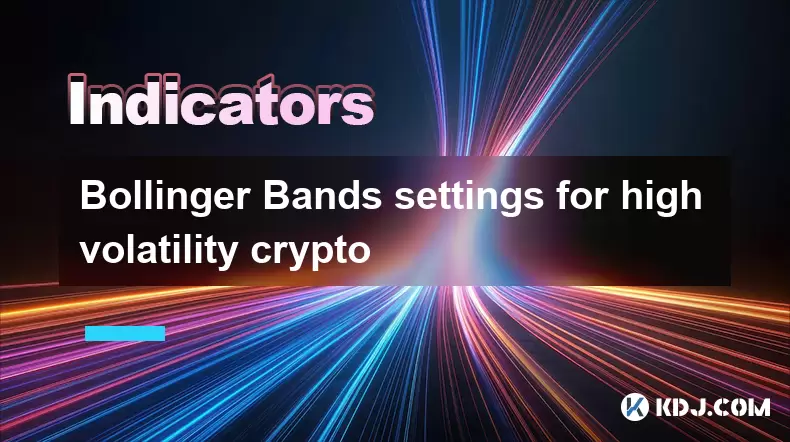-
 Bitcoin
Bitcoin $117,953.1650
-0.44% -
 Ethereum
Ethereum $3,404.6769
7.20% -
 XRP
XRP $3.2145
7.63% -
 Tether USDt
Tether USDt $1.0001
0.01% -
 BNB
BNB $717.7875
3.79% -
 Solana
Solana $175.1351
5.00% -
 USDC
USDC $0.9997
-0.02% -
 Dogecoin
Dogecoin $0.2140
6.36% -
 TRON
TRON $0.3125
3.78% -
 Cardano
Cardano $0.7984
6.61% -
 Hyperliquid
Hyperliquid $46.3875
-2.89% -
 Stellar
Stellar $0.4661
-1.97% -
 Sui
Sui $3.9769
-0.95% -
 Chainlink
Chainlink $17.0299
3.26% -
 Hedera
Hedera $0.2442
2.02% -
 Bitcoin Cash
Bitcoin Cash $494.1589
-0.49% -
 Avalanche
Avalanche $22.7305
3.32% -
 Shiba Inu
Shiba Inu $0.0...01429
3.24% -
 UNUS SED LEO
UNUS SED LEO $8.8207
-0.20% -
 Toncoin
Toncoin $3.2223
3.73% -
 Litecoin
Litecoin $99.4978
2.54% -
 Polkadot
Polkadot $4.1940
2.13% -
 Monero
Monero $341.6175
2.76% -
 Pepe
Pepe $0.0...01357
4.19% -
 Uniswap
Uniswap $8.8637
-2.74% -
 Bitget Token
Bitget Token $4.7017
0.48% -
 Dai
Dai $0.9998
-0.03% -
 Ethena USDe
Ethena USDe $1.0003
-0.04% -
 Aave
Aave $320.8518
-2.86% -
 Bittensor
Bittensor $428.9747
-1.94%
Bollinger Bands settings for high volatility crypto
Bollinger Bands, when adjusted for crypto's high volatility, can improve trading accuracy by reducing false signals and better capturing price dynamics.
Jul 17, 2025 at 11:42 am

Understanding Bollinger Bands in the Context of Cryptocurrency
Bollinger Bands are a popular technical analysis tool developed by John Bollinger in the 1980s. They consist of three lines: a simple moving average (SMA) in the center, and two outer bands that represent standard deviations above and below the SMA. In the context of cryptocurrency trading, where price volatility is often extreme, understanding how to adjust these settings becomes crucial.
The default setting for Bollinger Bands is a 20-period SMA with two standard deviations. However, this may not always be suitable for highly volatile crypto assets such as Bitcoin, Ethereum, or newer altcoins. The high volatility can cause prices to frequently touch or even break through the outer bands, leading to misleading signals if the trader isn't aware of the nuances.
Why Default Settings May Not Work Well for Crypto
In traditional markets like stocks or forex, the default 20-period and 2-standard deviation settings work reasonably well due to relatively lower volatility. However, cryptocurrencies often experience sharp price swings within short timeframes, sometimes triggered by news events, regulatory changes, or macroeconomic factors.
When using default settings on such volatile instruments, traders might observe the following:
- Prices hugging the upper band without a reversal.
- Frequent false breakouts when prices move beyond the bands.
- Less reliable mean reversion signals, which Bollinger Bands typically help identify.
This necessitates adjustments to the parameters to better suit the nature of crypto markets.
Adjusting the Period Length for Better Accuracy
One key parameter to tweak is the period length of the moving average. For high volatility environments, increasing the period from the standard 20 to 25 or 30 can provide a smoother baseline for the bands. This helps reduce the number of false signals caused by erratic price spikes.
For example:
- On a 4-hour chart, a 30-period SMA may offer more stability than the default 20-period.
- On a daily chart, extending the period to 35 or 40 could yield clearer insights into long-term trends.
By adjusting the period length, the central line adapts better to the market’s behavior, making the outer bands more reflective of actual volatility rather than noise.
Modifying Standard Deviations for Band Width
Another critical adjustment involves the standard deviation multiplier used to calculate the distance between the central line and the outer bands. Increasing this value from 2 to 2.5 or 3 can accommodate larger price swings and prevent premature band touches.
Consider the following scenarios:
- During periods of heightened uncertainty, such as before major regulatory announcements, a higher standard deviation setting (e.g., 2.5) can filter out excessive false alarms.
- In trending markets, especially during strong bull or bear phases, using 3 standard deviations may allow the bands to contain the price action more effectively.
These modifications ensure that the bands don’t get touched too frequently, thereby preserving their relevance as dynamic support and resistance levels.
Combining Bollinger Bands with Other Indicators
Relying solely on Bollinger Bands—even with adjusted settings—can still lead to misinterpretations. It's essential to combine them with complementary tools to enhance accuracy. Some effective combinations include:
- Volume indicators: A sudden spike in volume when the price reaches a band may signal a potential breakout or reversal.
- Relative Strength Index (RSI): Helps confirm overbought or oversold conditions when the price touches the upper or lower band.
- Moving Average Convergence Divergence (MACD): Useful for identifying momentum shifts that may precede a reversal after a band touch.
Using multiple indicators ensures that decisions are not based on isolated signals but rather on confluence, improving the likelihood of successful trades.
Backtesting Your Adjusted Settings
Before applying any modified Bollinger Band configuration to live trading, it's vital to backtest the strategy across different timeframes and market conditions. This involves reviewing historical data to see how your chosen settings would have performed in past cycles.
Steps to conduct effective backtesting:
- Select a variety of cryptocurrencies, including both high-cap and low-cap coins.
- Test across different timeframes, such as 1-hour, 4-hour, and daily charts.
- Observe how often the price respects the bands under your new settings versus the default ones.
- Track the frequency of false signals and compare win/loss ratios.
Some platforms like TradingView, MetaTrader, or custom scripts in Python can assist in automating this process. Backtesting allows you to fine-tune your settings before risking real capital.
Frequently Asked Questions
Q: Can I use different Bollinger Band settings for different cryptocurrencies?
Yes, it's advisable to tailor settings based on each asset’s volatility profile. For instance, Bitcoin might perform better with a 25-period SMA and 2.5 standard deviations, while a more volatile altcoin may require a 30-period SMA and 3 standard deviations.
Q: How do I know if my Bollinger Band settings are too tight or too loose?
If the price frequently breaches the bands without meaningful follow-through, they’re likely too tight. Conversely, if the bands rarely interact with the price, they might be too wide. Adjust accordingly until there's a balanced interaction.
Q: Should I change my settings depending on the timeframe I'm trading on?
Absolutely. Shorter timeframes like 1-hour or 15-minute charts tend to benefit from slightly tighter settings, while longer timeframes like daily or weekly charts often require wider bands to capture true volatility.
Q: Is it necessary to constantly adjust Bollinger Band settings?
While some traders prefer static settings for consistency, others adapt dynamically based on current market conditions. Monitoring volatility metrics like ATR (Average True Range) can guide when adjustments are needed.
Disclaimer:info@kdj.com
The information provided is not trading advice. kdj.com does not assume any responsibility for any investments made based on the information provided in this article. Cryptocurrencies are highly volatile and it is highly recommended that you invest with caution after thorough research!
If you believe that the content used on this website infringes your copyright, please contact us immediately (info@kdj.com) and we will delete it promptly.
- C2 Blockchain, DOG Coins, and Acquisition: A Meme-Native Bitcoin Asset
- 2025-07-17 20:30:12
- DeFi Evolution: Hyperion, HYPE Token, and the Hyperliquid Ecosystem
- 2025-07-17 21:30:12
- BlockDAG's NO VESTING PASS: A Crypto Game Changer Amid CRO & ONDO Swings
- 2025-07-17 21:30:12
- Ethereum, Pepe, Crypto: Navigating the Wild West of Digital Assets
- 2025-07-17 20:30:12
- Ethereum ETF Skyrockets: Record-Breaking Inflows Signal Bullish Trend
- 2025-07-17 22:10:12
- SOL, Bounce, Trap: Decoding Crypto's Latest Moves
- 2025-07-17 22:10:12
Related knowledge

Advanced RSI strategies for crypto
Jul 13,2025 at 11:01am
Understanding the Basics of RSI in Cryptocurrency TradingThe Relative Strength Index (RSI) is a momentum oscillator used to measure the speed and chan...

Crypto RSI for day trading
Jul 12,2025 at 11:14am
Understanding RSI in the Context of Cryptocurrency TradingThe Relative Strength Index (RSI) is a momentum oscillator used to measure the speed and cha...

Crypto RSI for scalping
Jul 12,2025 at 11:00pm
Understanding RSI in the Context of Crypto TradingThe Relative Strength Index (RSI) is a momentum oscillator widely used by traders to measure the spe...

What does an RSI of 30 mean in crypto
Jul 15,2025 at 07:07pm
Understanding RSI in Cryptocurrency TradingRelative Strength Index (RSI) is a momentum oscillator widely used in cryptocurrency trading to measure the...

What does an RSI of 70 mean in crypto
Jul 13,2025 at 06:07pm
Understanding the RSI Indicator in Cryptocurrency TradingThe Relative Strength Index (RSI) is a widely used technical analysis tool that helps traders...

Does RSI work in a bear market for crypto
Jul 16,2025 at 01:36pm
Understanding RSI in Cryptocurrency TradingThe Relative Strength Index (RSI) is a momentum oscillator used by traders to measure the speed and change ...

Advanced RSI strategies for crypto
Jul 13,2025 at 11:01am
Understanding the Basics of RSI in Cryptocurrency TradingThe Relative Strength Index (RSI) is a momentum oscillator used to measure the speed and chan...

Crypto RSI for day trading
Jul 12,2025 at 11:14am
Understanding RSI in the Context of Cryptocurrency TradingThe Relative Strength Index (RSI) is a momentum oscillator used to measure the speed and cha...

Crypto RSI for scalping
Jul 12,2025 at 11:00pm
Understanding RSI in the Context of Crypto TradingThe Relative Strength Index (RSI) is a momentum oscillator widely used by traders to measure the spe...

What does an RSI of 30 mean in crypto
Jul 15,2025 at 07:07pm
Understanding RSI in Cryptocurrency TradingRelative Strength Index (RSI) is a momentum oscillator widely used in cryptocurrency trading to measure the...

What does an RSI of 70 mean in crypto
Jul 13,2025 at 06:07pm
Understanding the RSI Indicator in Cryptocurrency TradingThe Relative Strength Index (RSI) is a widely used technical analysis tool that helps traders...

Does RSI work in a bear market for crypto
Jul 16,2025 at 01:36pm
Understanding RSI in Cryptocurrency TradingThe Relative Strength Index (RSI) is a momentum oscillator used by traders to measure the speed and change ...
See all articles

























































































